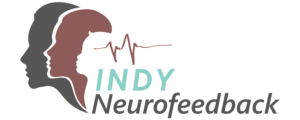Is Your Child’s Behavior Typical for his/her Age?
With school back in session, parent-teacher conferences are right around the corner. For parents of a very active elementary school child, the issue of ADHD (Attention Deficit/Hyperactivity Disorder) may come up. If so, what questions should you be asking?
- The first thing to appreciate is that every child is unique, so no single listing of ADHD symptoms fits every child.
- It’s also important to know that elementary age boys get tagged with “suspected ADHD” more than twice as many times as girls do.
- Not every child that seems to fit into the ADHD category will be clinically diagnosed by a physician as having the condition.
- Most importantly, according to Leanne O’Neil of INDY Neurofeedback, is that close to 90% of suspected ADHD labels seen in her clinic are given to children who actually have sustained an undiagnosed closed head injury (life’s head bumps) that resulted in brainwave dysregulation.
 It is vital that parents work to ascertain what actually is going on with their child. That takes time and that also takes good diagnostic testing of the brain.
It is vital that parents work to ascertain what actually is going on with their child. That takes time and that also takes good diagnostic testing of the brain.
ADHD has four primary symptoms:
- Hyperactivity
- Impulsivity
- Inattention
- Distractibility
Long term symptoms of a closed head injury can look eerily similar to ADHD, including:
- Hyperactivity and impulsivity
- Mood swings and irritability
- Inattention or inability to concentrate
- Distractibility
A ‘closed head’ injury, such as a concussion or jarring blow to the head may not have been understood at the time of the injury as being enough of a blow to sustain minor brain trauma/brainwave dysregulation. That can be particularly true in young children who don’t have the ability to articulate how they feel after trauma such as a fall from a tree or jungle gym, trampoline, soccer or football head injury, or even a head injury from rough play or a “fender bender” car accident.
Whether or not your child will be clinically diagnosed with ADHD by a medical professional, the behavior your child’s teacher has noticed is going to be counter-productive to the class as a whole, and absolutely should be addressed at school as well as at home. So where do you begin?
“A great place to begin is right there with the teacher,” says Leanne O’Neil, owner of INDY Neurofeedback. “Learn as much as possible about the behaviors and circumstances your child’s teacher is noticing. Ask questions and take notes. See if what your child’s teacher has observed is consistent with your own observations about your child.”
“In the meantime, no labels. Kids can get a lot of negative feedback from teachers, siblings, coaches, and other kids as a result of being labeled with ADHD. That can be really stressful and take a toll on their self-esteem. That in turn can provide the foundation for acting out more, which can lead to disciplinary problems.”
INDY Neurofeedback offers a brainwave test as well as neurofeedback to help overcome many of the symptoms associated with brainwave dysregulation.
According to Leanne O’Neil, “The brainwave test identifies unbalanced brainwave patterns that may be related to focus and attention issues while the neurofeedback is designed to teach individuals how to better regulate their brainwave patterns. We find that when a person learns how to do this, many of the issues improve – they become calmer, more focused and better able to concentrate.”
We will work with you and your child’s physician to lead to dramatic improvement in your child’s schoolwork and behavior in and out of school. Even better, your child may not need ADHD medications.
Let’s work together to help your child begin to turn things around early in the school year — positively and proactively.
